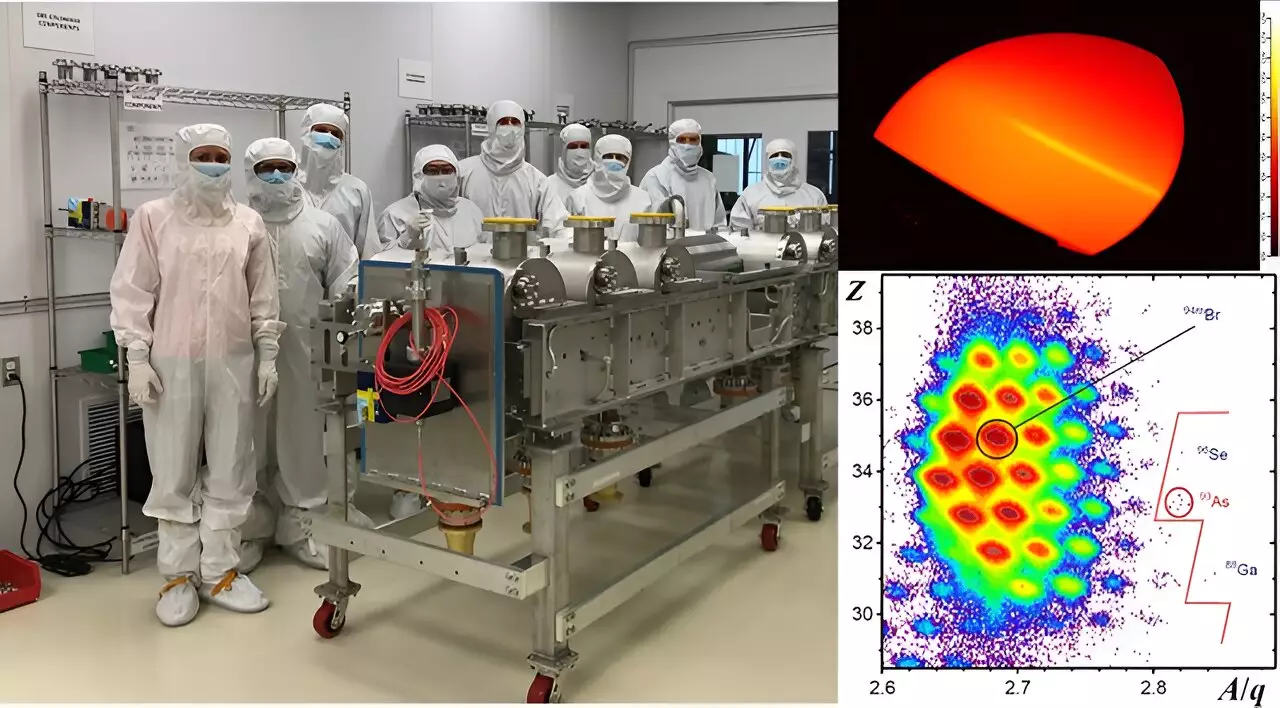At the Facility for Rare Isotope Beams (FRIB), scientists and engineers have achieved a groundbreaking milestone in the field of isotope research by successfully accelerating a high-powered beam of uranium ions. This feat is notable for establishing a continuous beam power of 10.4 kilowatts directed toward a target, a record that holds significant implications for future nuclear studies. The detailed findings of this work are documented in the esteemed journal, Physical Review Accelerators and Beams.
Uranium is acknowledged as one of the most challenging elements to manipulate within particle accelerators. However, its importance in the scientific community cannot be overstated. As reported by the National Academy of Sciences and the Nuclear Science Advisory Committee, over half of the 17 high-priority scientific programs involving rare isotope beams depend on uranium as a primary source. The capacity to produce numerous isotopes through methods such as fragmentation or fission makes uranium a key component in advancing nuclear research.
Achieving a high-power uranium beam opens unprecedented avenues for research into rare isotopes. In the initial eight hours post-acceleration, FRIB scientists succeeded in identifying three new isotopes: gallium-88, arsenic-93, and selenium-96. This rapid identification reflects the potential of the uranium beam to not only extend the horizons of current knowledge but also to enhance our understanding of the nuclear landscape.
The successful acceleration of uranium ions was no small task; it required impeccable operation across all accelerator devices, reaching the highest accelerating gradients. The new superconducting linear accelerator, composed of 324 resonators housed in 46 cryomodules, played a pivotal role in this achievement. These advancements, alongside the innovative liquid-lithium stripper and cutting-edge technologies like the unique heavy-ion Radio-Frequency Quadrupole (RFQ) and high-power target and beam dump, underpin the milestone reached by FRIB.
Furthermore, researchers developed advanced techniques for simultaneously accelerating three different charge states of uranium ions, utilizing a liquid-lithium film for precise stripping. This method was vital in attaining the record high beam power, underscoring the collaboration between various technologies and strategies in this research endeavor.
The identification of three previously unobserved isotopes was facilitated by FRIB’s Advanced Rare Isotope Separator, and this work exemplifies the collaborative spirit of the international scientific community, including contributions from experts in the United States, Japan, and South Korea.
As the FRIB team celebrates this milestone, it also signals the beginning of renewed exploration into largely uncharted territories of nuclear physics. With uranium as a fundamental key, researchers are poised to tackle complex problems and unveil new mysteries within the nucleus, broadening our scientific understanding well into the future. The implications of this work are profound, not just for isotope research but for the entire field of nuclear science, signaling promising advancements in both fundamental science and practical applications.


Leave a Reply